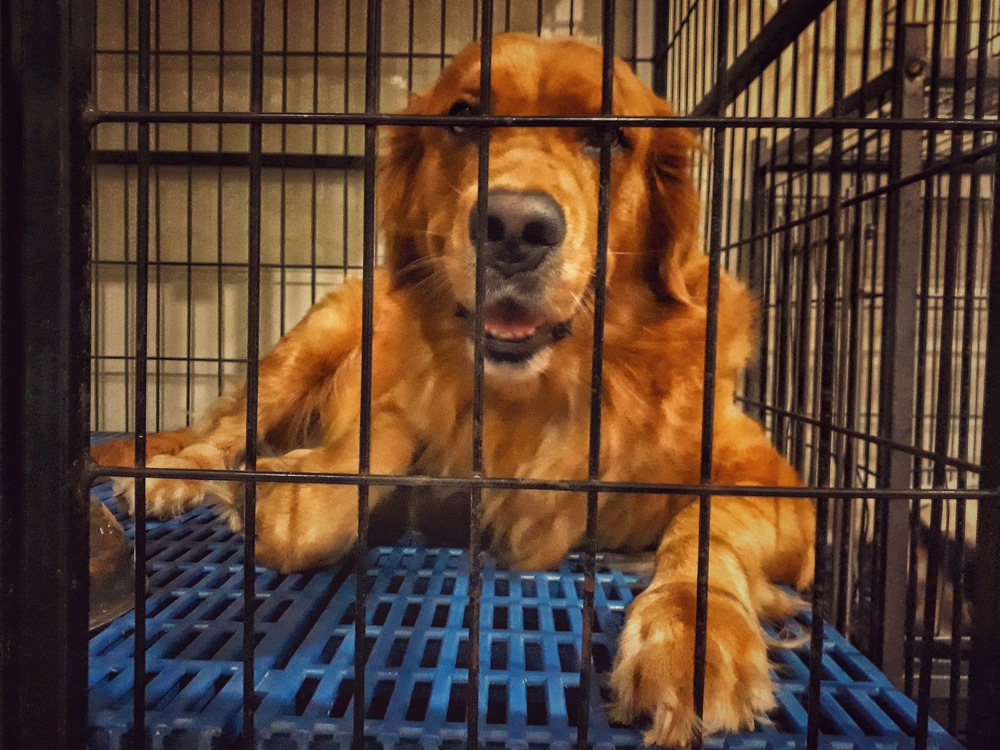Crate training is one of the most effective and humane methods for training a Golden Retriever. It provides your dog with a safe, secure space they can call their own, mimicking the instinctive denning behavior of dogs. Whether you’re house-training a puppy, preventing destructive behavior, or providing a comfortable resting place, crate training offers numerous benefits.
This comprehensive guide will walk you through the process of crate training your Golden Retriever step by step, ensuring a smooth and stress-free experience for both you and your furry friend.
Why Crate Training is Important for Golden Retrievers
Golden Retrievers are known for their intelligence, adaptability, and eagerness to please. These traits make them excellent candidates for crate training. Here’s why crate training is beneficial:
House Training: A crate helps establish a routine and prevents accidents.
Safety: Keeps your Golden Retriever out of trouble when unsupervised.
Comfort: Provides a cozy, private space where they can relax.
Travel: Familiarity with a crate makes travel and vet visits less stressful.
Preventing Anxiety: Proper crate training helps reduce separation anxiety.
Choosing the Right Crate for Your Golden Retriever
1. Crate Size
Golden Retrievers are medium to large-sized dogs, so selecting the correct crate size is essential. The crate should be large enough for your dog to stand, turn around, and lie down comfortably.
Puppies: Use a crate with a divider panel to adjust the space as your puppy grows.
Adult Golden Retrievers: A 42-inch crate is generally suitable.
2. Crate Type
Wire Crates: Provide excellent ventilation and visibility.
Plastic Crates: Offer more privacy and are ideal for travel.
Furniture-Style Crates: Double as stylish furniture for your home.
Step-by-Step Crate Training Guide
Step 1: Introducing the Crate
Goal: Help your Golden Retriever associate the crate with positive experiences.
Set Up the Crate: Place it in a quiet, low-traffic area where your dog feels comfortable.
Make it Inviting: Add a soft bed or blanket and a few favorite toys.
Open the Door: Leave the crate door open and allow your dog to explore it freely.
Encourage Exploration: Use treats or kibble to lure your dog inside. Praise them when they enter.
Pro Tip: Don’t force your dog into the crate. Let them explore at their own pace.
Step 2: Feeding Inside the Crate
Goal: Build positive associations with the crate by feeding meals inside it.
Start with the Door Open: Place your dog’s food bowl near the crate entrance. Gradually move it inside the crate.
Close the Door Briefly: Once your dog is comfortable eating inside, gently close the door while they eat. Open it immediately after they finish.
Extend Door Closure: Gradually increase the time the door remains closed while they’re inside.
Step 3: Practice Short Crate Sessions
Goal: Teach your Golden Retriever to stay in the crate for short periods.
Encourage Entry: Use a command like “crate” or “kennel” and reward your dog when they go inside.
Close the Door: Close the crate door for a few seconds, then open it and reward your dog for staying calm.
Increase Time: Gradually extend the time your dog spends in the crate. Stay nearby initially to reassure them.
Step 4: Leaving the Room
Goal: Help your dog feel comfortable in the crate even when you’re not in sight.
Practice Short Absences: Once your dog is calm in the crate, leave the room for a few minutes and return.
Extend Absences: Gradually increase the duration of your absences. Always reward your dog for staying calm.
Monitor Behavior: Use a baby monitor or camera if needed to observe your dog’s reaction.
Step 5: Crate Training Overnight
Goal: Ensure your Golden Retriever sleeps peacefully in the crate at night.
Bedtime Routine: Establish a calming routine before bedtime, such as a walk or playtime, to tire them out.
Location: Place the crate in your bedroom initially so your dog feels secure.
Comfort Items: Include a soft blanket or a piece of clothing with your scent.
Step 6: Crate Training While You’re Away
Goal: Teach your dog to stay in the crate when left alone.
Exercise First: Ensure your Golden Retriever has had plenty of exercise before crate time.
Start Slow: Begin with short durations when you leave the house.
Avoid Drama: Don’t make a big fuss when leaving or returning to prevent anxiety.
Tips for Successful Crate Training
Be Patient: Every dog learns at their own pace. Avoid rushing the process.
Use Positive Reinforcement: Reward your dog with treats, praise, or toys for good behavior.
Never Use the Crate for Punishment: The crate should always be a positive, safe space.
Provide Breaks: Don’t leave your dog in the crate for too long. Puppies need more frequent potty breaks.
Create a Routine: Consistency helps your dog feel secure and understand expectations.
Troubleshooting Common Crate Training Issues
1. Whining or Barking in the Crate
Cause: Boredom, anxiety, or the need to potty.
Solution: Ignore whining if it’s for attention. If they might need to potty, take them out calmly and return them to the crate.
2. Reluctance to Enter the Crate
Cause: Fear or negative associations.
Solution: Use high-value treats and praise to encourage entry. Avoid forcing them inside.
3. Chewing on the Crate
Cause: Anxiety or boredom.
Solution: Provide chew-safe toys and ensure your dog gets enough exercise.







